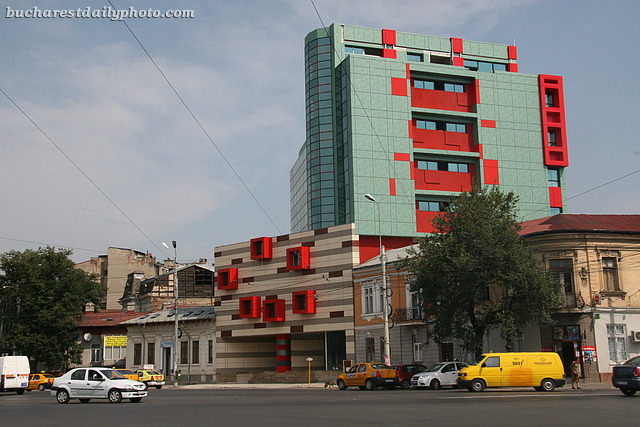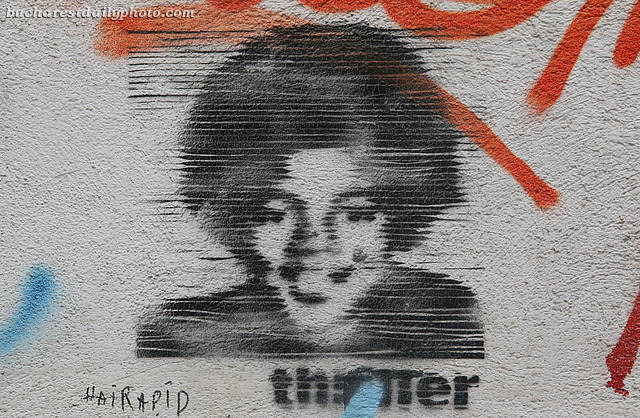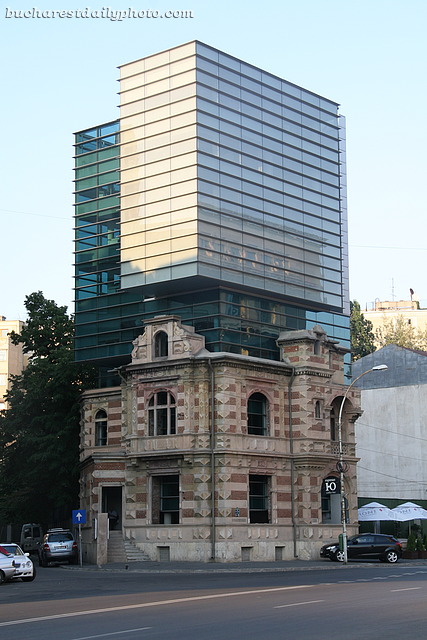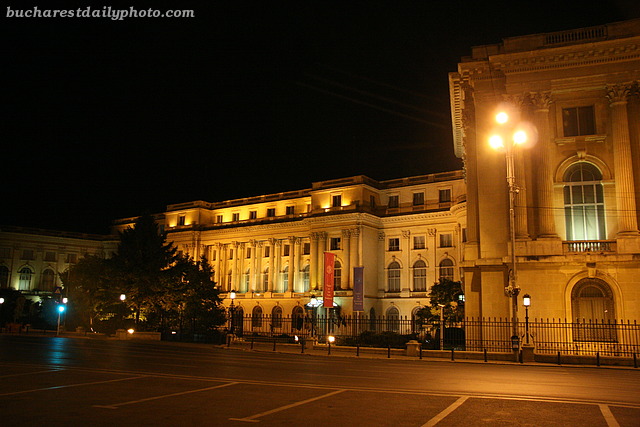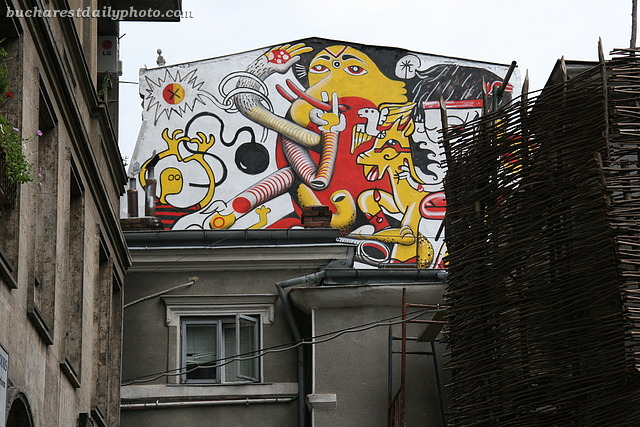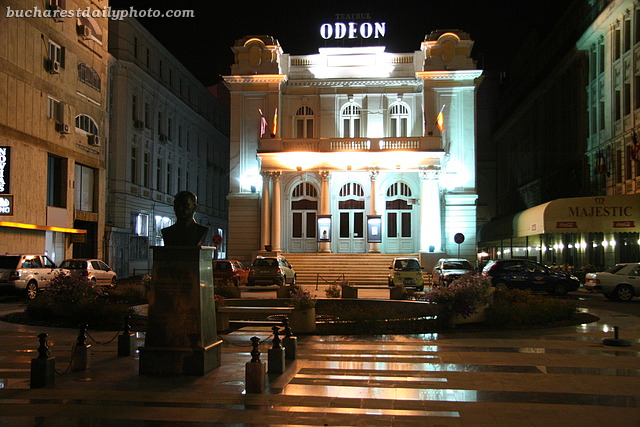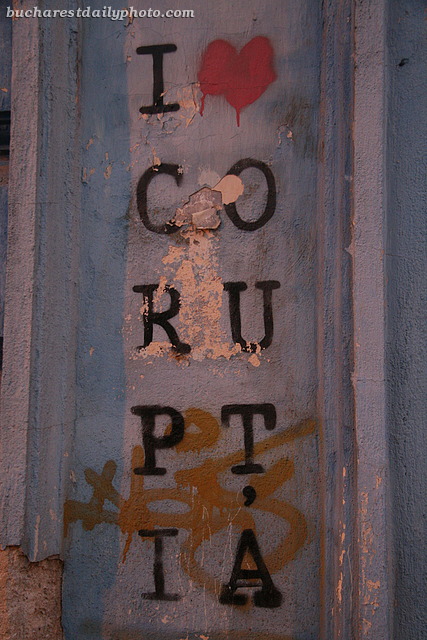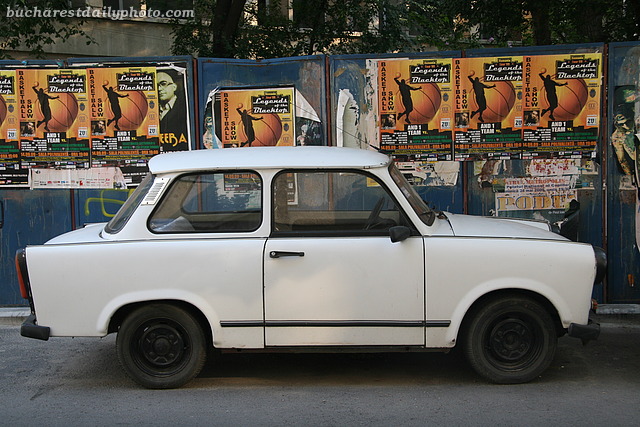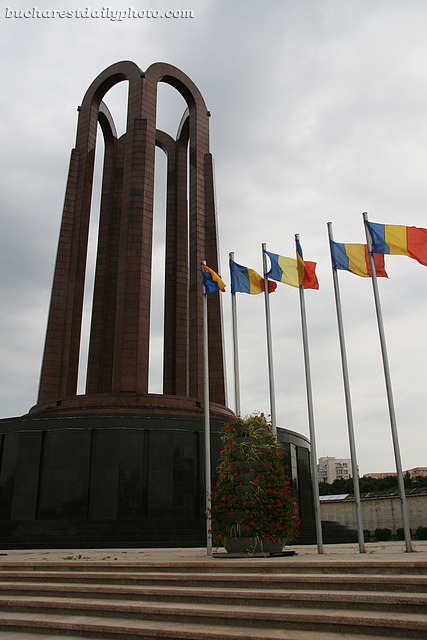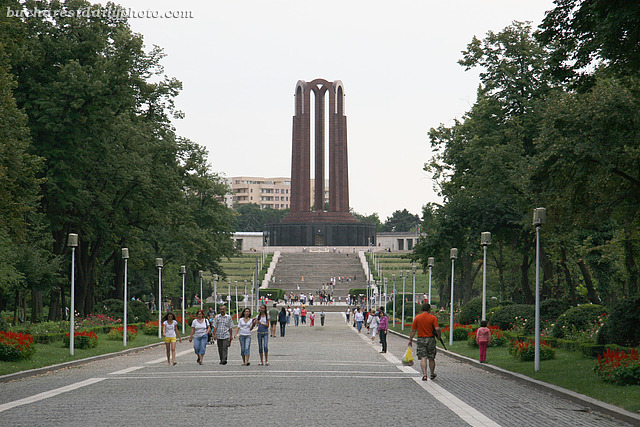Continuing the nightly walk along Victory Road, at number 40 we find a little square with a fountain and in the background the beautiful building of the Odeon Theater. I researched the history of the building before writing this post and found out that the building and the piece of land it’s built on changed many hands and was used for many things during the years. I guess that’s probably normal for a piece of land with such a good location. In the end I decided to spare you all the little details regarding ownership and functionality. It’s Friday and it’s time for having fun rather than a history lesson. I’ll only say that the theater was built in 1911 and that its auditorium is probably the most elegant among all of Bucharest’s theaters. The statue in the foreground is that of Kemal Ataturk, the founder and first president of the Republic of Turkey.
Most regular people hate corruption for the obvious reasons but there are exceptions, like the person who made this drawing on a building on Doamnei Street. “I “heart” corruption” reads the inscription. Maybe he’s working in a government office? 🙂 I rather hope he’s being sarcastic.
… double the value of a Trabant?
A: Fill up the tank!
Q. How many workers does it take to build a Trabi?
A. Two, one to fold and one to paste.
Q. Why do some Trabants have heated rear windows?
A. To keep your hands warm when pushing.
The Trabant… this wonderful piece of East German engineering 🙂 The east’s answer to Volkswagen, the butt of all jokes, the most common vehicle in East Germany, exported largely to countries inside the communist block. I used to see many of them in Bucharest back in the 80s but now weeks can pass before I see one. They are in fact slowly disappearing. My guess is that the only people that still drive a Trabant in Bucharest are the fans, the enthusiasts, the nostalgic, the ones that want to look different. With the new anti-pollution laws concerning cars, I’m guessing it must cost a lot to keep one registered. I could say that at least in Romania they have already become collector’s items. I always thought they looked cute and I’m sorry that I never had the chance to drive or ride in a Trabant. But it looks like the Trabant is being revamped in the form of a new all-electric, eco-friendly wonder according to this article.
And another (more patriotic) shot of the mausoleum.
What does a citizen of Bucharest do if it’s nice outside and it’s a Sunday? A lot of them are heading for one of the city’s parks to chill in the shade on a wooden bench, talk to friends, play some volleyball, walk hand in hand with their sweethearts, play with other kids (if we’re talking about the little citizens), listen conversations of their neighbourgs, watch the old people play chess, rent a boat, check out other people’s outfits, drink a beer if there’s a beer garden nearby (there always is one), take pictures (like myself), rollerblade or ride the bicycle, jogg, walk the dog (if it’s allowed), feed the geese or swans or ducks, smell the flowers etc. Today’s photo shows the central alley in Carol Park on a Sunday. And as an added bonus, aside from the greenery and the people, there’s something else for you to enjoy in the picture: a piece of communist architecture, the mausoleum built in the honor of … hold your breath … “the heroes who fought for the freedom of the people and of the motherland and for socialism”. You can breathe now. I’m not kidding, that was the name of the monument during the communist regime. It was built in 1963 and until 1991 it housed the remains of many communist leaders. Nowadays the mausoleum contains the remains of soldiers fallen in WWI and has been dedicated to the Unknown Soldier. In front of it there’s a small monument flanked by guards where an eternal flame is burning.
